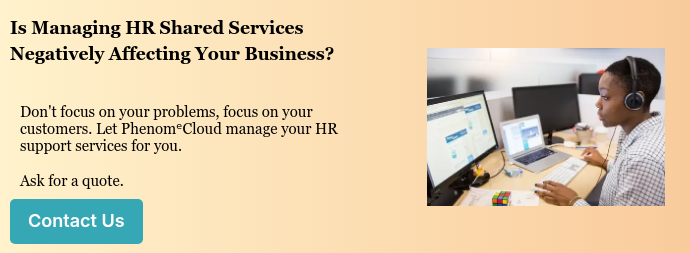
Fifteen years ago vendors were designing applications to make HR’s work easier. While we had self-service applications for our platforms, we configured them to organize data. The user experience was secondary, and we often created workflows that required extensive training and support for end users. The result was that managers & employees didn’t use self-service unless they had no other alternative. Executives didn’t use it at all.
Today’s users want access anytime, anywhere, and on any device. Employees want to be able to select their benefits options as easily as they order an e-book online. Managers want to be able to approve time off while they are on the go. Executives want actionable business intelligence in real time no matter where they are or what they are doing.
It is more than a desire for a simple, useful experience. People have become more mobile. They often work from coffee shops, airport lounges, and their backyard patios. The freelance contingent workforce is growing, and most of them work from their homes or remote offices. And let us not discount the vast numbers of workers who are on the move all day providing services and deliveries.
Human capital management technology is a very competitive marketplace. Vendors jumped into the mobile market trying to get an edge in the market, and now we are in the “me, too” stage of the first generation of HCM mobile apps. It is hard to find a vendor that doesn’t have at least some mobile capability.
Industry analysts like Micah Fairchild urge caution. Fairchild is deciphering whether mobile HCM software lives up to the hype and recommends that buyers use caution when evaluating mobile applications. He flatly stated that mobile HCM is “not ready for mainstream adoption.”
We disagree. It depends on the function and how well it is implemented. There are excellent applications available for some functions, and they are improving rapidly. Let us review the use cases and why you may want to include them in your mobile strategy.
Recruiting. People in the recruiting business will tell you mobile recruiting is a necessity. There is a lot of hype about mobile recruiting that would have you believe almost all job seekers are applying for jobs using mobile devices. Don’t believe it.
Trying to type a job application on a mobile phone is such a tedious chore people will do it only if they have no other alternative. Glassdoor, a trusted source, tells us that 45% of people use their mobile device daily to search for jobs, but 58% say it is important to be able to save a job on their mobile device and apply later using their desktop. Searching for jobs is one thing, applying for them is quite another.
That doesn’t mean you shouldn’t have a mobile recruiting strategy. There are several reasons you should.
- According to Glassdoor, 86% of job seekers begin their job search on mobile devices.
- Today’s job market requires cultivation of passive job seekers, who will use their personal mobile devices instead of their workplace computers. If you are committed to engaging passive job seekers, you will need a talent community, and online communities live on mobile devices.
- What gets talent in the door is the candidate experience, and mobile is the best way to stay in contact.
- People use mobile devices for social media websites, and that is where your reputation resides. You should be managing your online reputation by engaging the mobile social community.
Onboarding. As we discuss in our onboarding infographic, the experience begins the moment your candidate accepts your offer, and the nurturing continues well past the first day of work. A mobile onboarding app will help grow the relationship.
Goal Management and Performance. Whether you need a mobile app for goal management and performance depends on your business. If people interact in their offices where they use desktop computers, it may not be necessary. If they are on the go or a factory floor, mobile may be helpful.
Mobile Learning and Development. The ability to access short bursts of training in micro learning and spaced repetition sessions is proving to have a beneficial impact on learning retention. Enabling people to use short training sessions while they are in a waiting room or an airport lounge can boost learning engagement.
Payroll and Benefits. People expect to have the same 24/7 access to their payroll and benefits information they have with their banking services.
Time and Attendance. For remote or mobile workers, being able to track their work time from a mobile device makes sense. Time entry will be much more accurate if employees can quickly enter start and stop times on their mobile devices instead of remembering their work hours at the end of the week. You may find that the improved accuracy in timekeeping will pay for the mobile deployment.
We also think both you and your employees would benefit from being able to request time off from home while they are making their plans. Supervisors and managers will prefer to be able to approve time and attendance from mobile devices as the events occur.
Analytics and Dashboards. Your executives and managers will appreciate the ability to use business analytics from wherever they are. It is much better to be able to call up information in a meeting that having to defer a decision until another meeting.




Leave a Comment